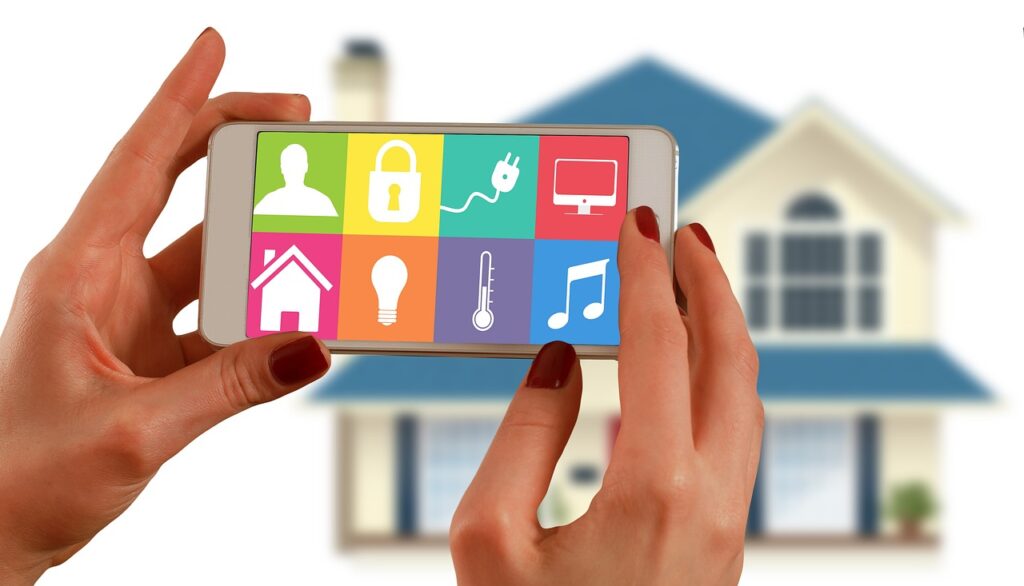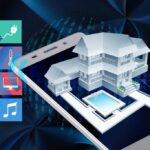The Home Automation Revolution: Beyond Science Fiction
Home automation, once a concept confined to science fiction movies with futuristic homes anticipating their inhabitants’ needs under the control of an omnipresent AI, has now become an accessible reality for millions worldwide. The integration of advanced technology into our homes is transforming the way we live, offering increased control, security, and efficiency in our daily environment.
What is Home Automation?
Home automation combines the Latin word “domus” (home) with “automatic” to describe the automation of home systems and devices to enhance quality of life. As technology advances, home automation systems have evolved to offer unprecedented levels of integration and sophistication, allowing users to manage nearly every aspect of their home from their smartphone or with a simple voice command.
Integration and Centralized Control: The Heart of a Smart Home
One of the most revolutionary aspects of home automation is the ability to integrate multiple devices and systems into a single ecosystem. This allows users to control everything from lighting and heating to appliances and home security from a single platform. Modern home automation systems are designed to be compatible with a wide range of devices from different manufacturers, making it easier to create a truly smart home.
For example, imagine arriving home and having the lights turn on automatically, the thermostat adjust to your preferred temperature, and music start playing through your smart speakers as you open the door. All of this is possible thanks to devices that “talk” to each other through communication protocols like Wi-Fi, Zigbee, or Z-Wave. With the help of a virtual assistant like Amazon Alexa or Google Assistant, you can control your entire home with simple voice commands, making interaction with technology more natural and convenient.
Additionally, device integration allows for the creation of custom “scenes” that activate with a single touch or voice command. For instance, you can set up a “movie night” scene that dims the lights, closes the curtains, adjusts the thermostat, and turns on your TV and sound system instantly. This level of customization is one of the most appealing features of home automation, allowing users to tailor their home environment to their routines and preferences precisely.
Enhanced Security: Intelligent and Efficient Protection
Home security is a major concern for homeowners, and home automation has proven to be an invaluable ally in this regard. Automated security systems not only offer greater protection but also do so more efficiently and conveniently.
A cornerstone of smart home security is the use of network-connected surveillance cameras, allowing users to monitor their home in real time from anywhere in the world. These cameras, equipped with motion sensors and night vision, can send alerts to your phone when unusual activity is detected, enabling a swift response in case of emergency.
In addition to cameras, smart locks are a key component of a home automation security system. These locks allow access to your home without physical keys, using PIN codes, fingerprints, or even facial recognition. This not only eliminates the risk of losing keys but also enables homeowners to grant temporary access to guests or service providers without being present.
Integrated alarm systems take security a step further, allowing users to activate or deactivate alarms from their smartphones and receive instant notifications in case of intrusion. These systems can also integrate with other home devices, such as lights and sirens, to more effectively deter potential intruders.
Another important aspect of home automation security is the ability to detect and respond to emergencies such as fires or gas leaks. Intelligent smoke and carbon monoxide detectors can alert residents and send notifications to their mobile devices if danger is detected, even when they are not at home. Some systems can even automatically shut off gas or electricity in case of an emergency, minimizing the risk of severe damage.
Energy Efficiency: Saving Money and Protecting the Planet
Energy efficiency is another key benefit of home automation, gaining popularity in an increasingly sustainability-conscious world. Home automation systems are designed to optimize energy use, helping users reduce their consumption and, consequently, their electricity bills.
One of the most popular devices in the energy efficiency category is the smart thermostat. These thermostats learn users’ daily routines and automatically adjust the temperature to maintain a comfortable environment while minimizing energy use. For example, the thermostat might reduce heating or cooling when no one is home and readjust the temperature before residents return.
Smart lights also play a crucial role in energy efficiency. These systems allow users to schedule when lights turn on or off based on the time of day or room occupancy. Additionally, many smart lights are compatible with motion sensors, ensuring they only light up when necessary, eliminating energy waste.
Smart plugs are another essential component of an energy-efficient home. These devices allow users to remotely control the power of appliances, preventing energy consumption by devices in standby mode. Some smart plugs can even monitor real-time energy usage, providing valuable data to help identify and correct inefficient consumption patterns.
Beyond individual devices, many home automation systems enable users to monitor and manage their entire home’s energy consumption from a single platform. This not only helps reduce overall consumption but also encourages more sustainable and environmentally conscious habits.
Future Trends in Home Automation: What Lies Ahead
As technology continues to advance, home automation is evolving in exciting new directions. One of the most promising trends is the integration of artificial intelligence (AI) into automation systems. AI has the potential to make smart homes even more proactive, anticipating residents’ needs and adapting to their preferences without manual intervention.
For example, an AI-powered home automation system could learn user behavior patterns and automatically adjust lighting, temperature, and other aspects of the home to maximize comfort and efficiency. AI can also enhance home security by detecting unusual activity patterns and alerting homeowners to potential threats before they occur.
Another emerging trend is the integration of home automation with renewable energy technologies, such as solar panels and home batteries. This will allow homeowners not only to manage their energy consumption but also to optimize the use of renewable energy, further reducing their carbon footprint.
Finally, interoperability between devices and systems remains a key focus in the future of home automation. The ability to seamlessly integrate products from different manufacturers into a single ecosystem continues to be a challenge, but advancements in communication standards like Matter are paving the way for a more connected and efficient home.
Invitation to Explore Home Automation
Home automation is revolutionizing the way we interact with our homes, offering a combination of comfort, security, and energy efficiency that was once unimaginable. If you haven’t yet explored the possibilities of a smart home, now is the perfect time to start. Consider trying out a basic automation device, such as a smart thermostat or security camera, and experience firsthand how technology can transform your daily life.


